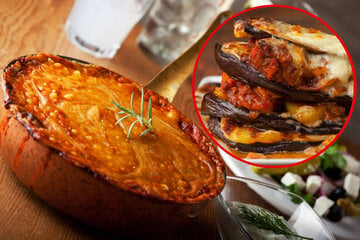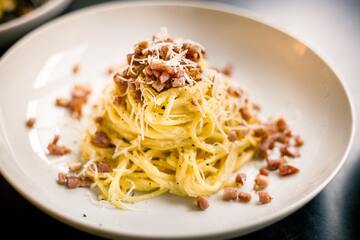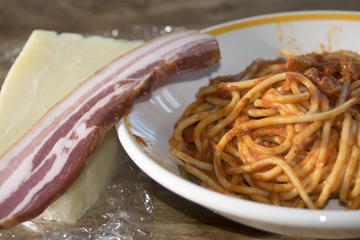Bibimbap recipe: How to make Korean bibimbap
Bibimbap is a visually stunning, versatile, and relatively easy meal to make. It's also incredibly delicious, healthy, and quick. In this bibimbap recipe, we will take you through how to make bibimbap, and how to eat it, too!
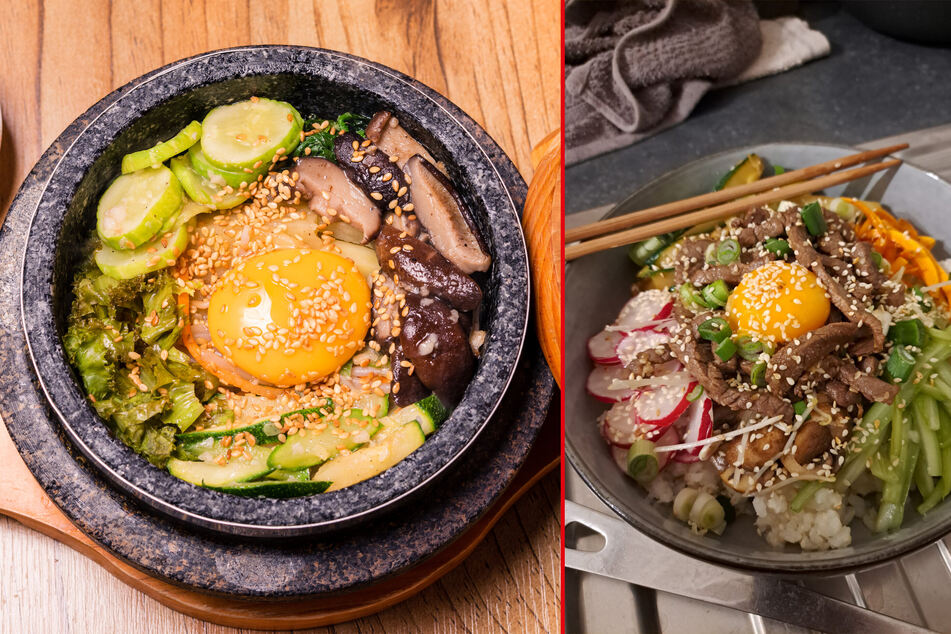
Everyone is forever searching for a fast-and-easy weeknight meal. You want it to be healthy, you want it to be quick to put together, and you want it to taste absolutely amazing. Bibimbap is the ultimate solution to this conundrum, as it is a dish that can be prepared mostly in advance and is unbelievably nutritious.
If you're a fan of Korean food, you're probably a fan of bibimbap. TAG24 is here with our delicious and easy bibimbap recipe. How can you make it, how should you eat it, and what do you need to know?
Please note: This ain't a "traditional" recipe, but one that we have curated to be relatively quick and easy to make on a weeknight. It needs to be accessible to an American audience, and we have designed it to be.
What is bibimbap?
Bibimbap is a traditional and highly optimizable Korean dish that is generally made up of a bowl of rice adorned with a variety of different vegetables and meats. It is often adorned with a raw egg yolk or a fried egg, and served in a stone bowl that has been superheated to crisp-up the rice on the bottom.
Its name comes from the Korean word "bibim" which means to mix, and "bap" which means rice. Different versions of the dish have existed for hundreds of years, as it is basically a bowl of rice with a bunch of different things mixed in. A traditional feature of Korean cuisine, bibimbap has now become a mainstay of Asian food in the west.
How to make bibimbap: Recipe
The cool thing about bibimbap is that, despite it being kind-of complicated to look at, and despite it featuring a ton of different ingredients, it's actually remarkably easy to make. It really says something that the hardest thing about this recipe is the process of cooking the rice, which isn't too difficult at all!
So, what do you need when you're making bibimbap?
- A sharp knife
- A cutting board
- A round, high-lipped bowl
- A rice cooker (or a medium-sized saucepan)
- A wok (or a big frying pan, though it's not the same)
- A spatula
Bibimbap doesn't require any unusual equipment, though it is worth noting that a stone bowl designed to be heated up is a great edition if you want to be super traditional.
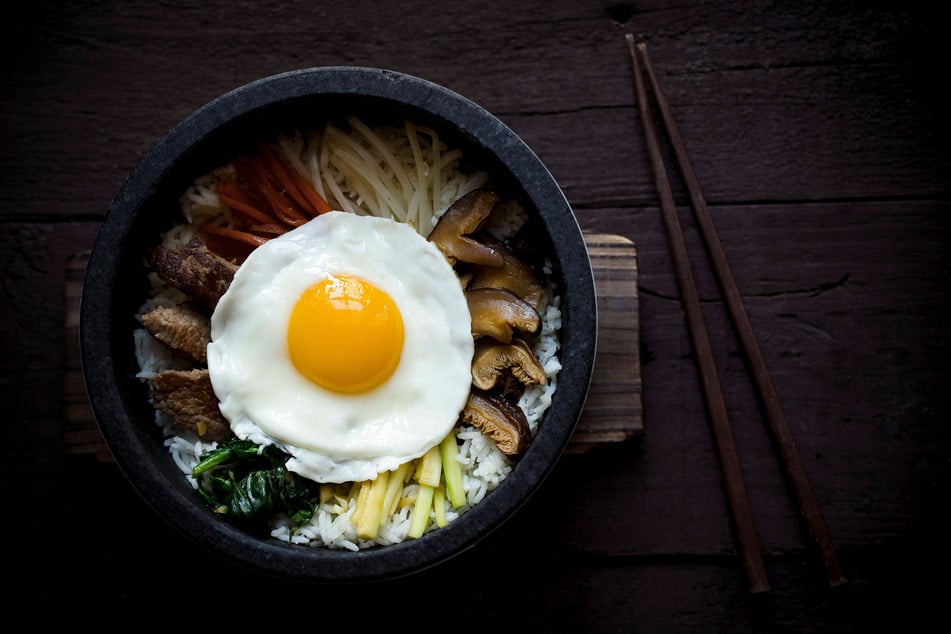
Korean bibimbap recipe | Ingredients
This is the most complicated part of the bibimbap-making process. There are tons of different ingredients to buy, but don't fear, most of them are pretty cheap. The biggest expenses here will be the sauces and the oils, but once you have them you will use them for a ton of things.
Here are the ingredients you'll need to make Korean bibimbap:
- Carrots
- Mushrooms
- Beef
- Scallions
- Celery
- Radishes
- Zucchini
- Bean sprouts
- Garlic
- Soy sauce
- Sesame oil
- Sesame seeds
- Chili flakes
- Eggs
- Rice
- Water
- Salt
- Pepper
A note on the ingredients: We have deliberately not included measurements here because it is entirely based on your taste and preference. On top of that, remember that this is a very versatile dish. If you don't like something we have included, replace it with something you do like!
Korean bibimbap recipe | Instructions
Now it's time to put this all together. Here's a pro-tip for you: When you have some time, chop up a bunch of this stuff at the beginning of the week. It'll take a while to do the chopping, so to make it easy and quick to assemble on a weeknight, marinade your meat in advance and get everything chopped (within reason, don't leave it all chopped up too long before you eat it).
Here's how to make Korean bibimbap!
Step 1: Start by getting your rice on the stove or in the rice cooker to boil. Follow our instructions on cooking rice to get it nice and fluffy, steaming hot, and flavorful.
Step 2: Take a small frying pan and put it on medium heat. Add about half a cup of sesame seeds to it and toast them off until they are starting to go lightly brown. Remove them from the heat immediately at this stage, to prevent burning.
Step 3: You need to marinade your beef. Cut it into thin strips, chunky enough for stir-frying but not too big. Add these pieces to a bowl.
Step 4: Into the bowl add about a tablespoon of chili flakes, one diced-up scallion, a healthy crack of pepper, about a tablespoon of sesame oil and another tablespoon of sesame seeds, and two tablespoons of soy sauce.
Step 5: Mix it all together so that the beef is healthily coated in the marinade and set it aside, at room temperature, while you continue cooking. If you prepare this in advance, keep it stored in the fridge.
Step 6: Now it's time to cut up all of your vegetables. You want the zucchinis in long thin strips, the carrots and celery julienne, your mushroom sliced into chunky pieces, and your radishes as thin as possible.
Step 7: Take your celery, beansprouts, and radishes and put them in three different bowls. To each bowl, add a pinch of salt and about a teaspoon of sesame oil. Mix thoroughly and allow them to sit.
Step 8: Now it's time to use the wok. Season the wok and then get it nice and piping hot, so that you can visually see the wok hay coming off its surface.
Step 9: Add a couple of teaspoons of sesame oil, so that it forms a small pool in the bottom of the wok. Start with your zucchini, chucking it in there with a crack of pepper, some salt, and some crushed garlic. Cook for a little while and then add a small dash of soy sauce. Remove once soft and slightly transparent.
Step 10: Now add some more sesame oil and add the carrots, sautéing on high with a dash of salt until soft. Do the same as the carrots with the mushrooms, but adding a pinch of chili flakes as well.
Step 11: Once all the veggies are fried off, it's time for the meat. Add a healthy amount of sesame oil and crank the heat up to the maximum. Once it's piping hot, chuck in the meat with the marinade and a bit of crushed garlic.
Step 12: This whole process should last only around one minute in total. Fry it off in the wok on high, keeping it in constant motion and allowing the sides to sear. Remove after only about one minute. You want the beef to be only partially cooked, for tenderness and flavor.
Step 13: Everything's ready now! It's time to assemble your bibimbap. Start with the rice, covering the bottom of your bowl and pressing down so that it becomes a relatively firm platform on which to place the rest of your ingredients.
Step 14: Now place your vegetables around the edge of the bowl, one by one, in an aesthetically pleasing way. The celery and the radishes don't need to be cooked, so order everything according to their color, size, and looks.
Step 15: Take the bean sprouts and spread them over the rice in the middle of the bowl. Scoop your meat and put it on top. Take a single egg, separate the white from the yolk and place the yolk in the center, on top of the meat (make a little indent in the meat, so that it doesn't slip off.
Step 16: Garnish by sprinkling roasted sesame seeds over the top, some cracked pepper, a little bit of salt to taste and a smattering of chili flakes. Serve and enjoy!
Part of the joy of bibimbap is the way that it looks, so make sure to take time when you plate it. Be careful and precise, and enjoy the process as much as you can!
Vegetarian bibimbap recipe
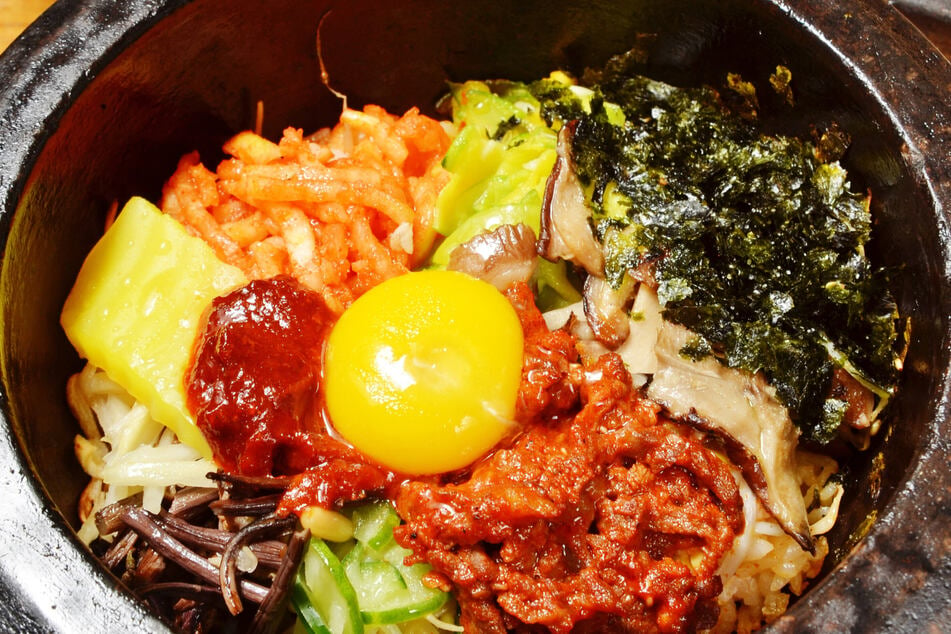
Vegetarians should rejoice at the thought of bibimbap, because it is the perfect thing for them to eat! Simply omit the meat and do everything the same but with a twist: Get yourself some kimchi, some gochujang, and add extra veggies.
If you want to keep the egg yolk, great, but we recommend doubling down on those mushrooms. Get more of them, give them a nice sear as previously described, and make sure that the whole dish is punctuated by that smoky wok-hay flavor we all love.
Here are the vegetables we'd recommend for a vegetarian bibimbap:
- Scallion
- Kimchi
- Sea weed
- Mushrooms
- Cucumber
- Pickled onions
- Zucchini
- Celery
- Bean sprouts
- Gochujang (Korean chili paste)
Remember to keep all the techniques the same. Make the bibimbap exactly as you would if you were making it with meat, just replace the meat with the vegetarian ingredients described.
Vegan bibimbap
When it comes to bibimbap, fresh is the name of the game. There's no point trying to replicate the taste of the meat or the egg with vegan alternatives. While there are some good ones out there, they won't have the pop you need and will result in a bit of a weird dish.
It's best to go simple. Slash the egg and do it exactly as you would do it with the vegetarian version. All the other ingredients are completely vegetable-based, but make sure that you add some kind of protein in there. Either more mushrooms or, perhaps some beans or chickpeas.
How to eat bibimbap
Traditionally, you should eat bibimbap communally and with a pair of chopsticks. The idea is to mix things together as much as you want, enjoying different flavors and pops of different textures between each mouthful. Of course, if you can't handle chopsticks, then a fork and spoon will do just fine.
You want that egg yolk to dissolve into the rice and create a beautiful creamy texture. You want a crunch from the vegetables, tenderness in the meat and mushrooms, and a tang from the pickled items that you chose. Collect it all up together and eat it with care and attention, making each mouthful different.
The ultimate way to eat bibimbap is in a stone pot that has been heated over a flame. After placing the rice in the bottom, you heat up the stone so that it sears the bottom of the rice and adds a lovely crunch and a smoky note.
Is bibimbap healthy?
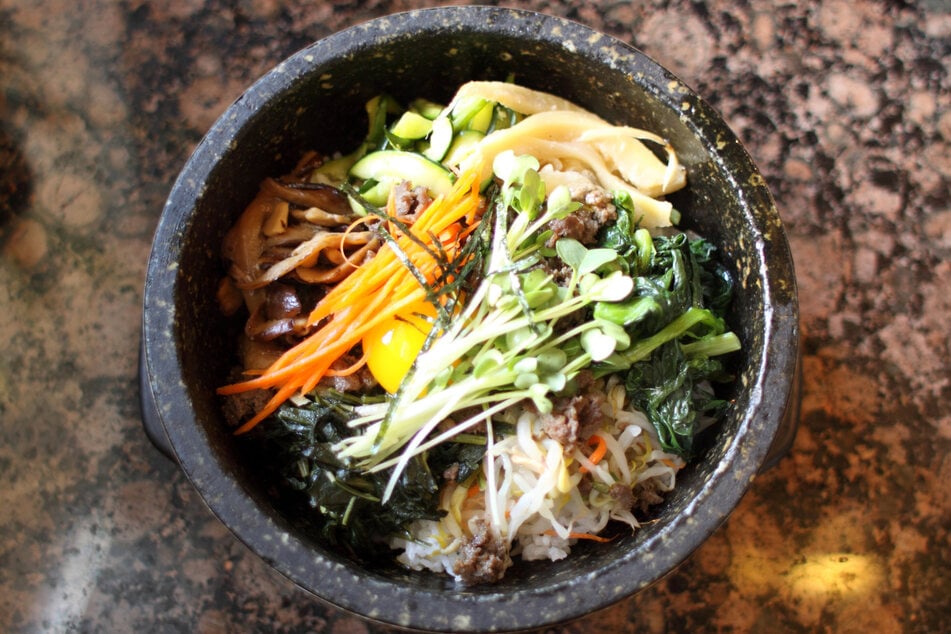
Bibimbap can be as healthy, or as unhealthy, as you want it to be. In general, it is a great option for those who want something healthy and easy, but don't want to forsake the flavor. If you use high-quality ingredients, don't drown it in oil, eat everything in moderation, and keep it all fresh, it'll be incredibly healthy.
The more meat you put in, the more oil you use, and the bigger the quantities you consume, the more unhealthy it will be. It's something that you can modify day-to-day. This versatility means that bibimbap would be something safe to eat every night of the week!
Hot stone bibimbap is the best, but not necessary!
Traditionally, bibimbap is served in an iconic stone bowl that has been heated excessively. The idea is that the hot stone will sear the rice on the bottom of the bowl, creating a crunch that adds an extra textural element. If you have the resources to do it, then go for it, but it isn't entirely necessary.
Ultimately, bibimbap is a great option for those who know they'll be in a rush come weeknights, have time to prepare in advance, and want something healthy and delicious. Give it a try, you won't regret it!
Cover photo: Collage: Imago/Panthermedia & TAG24
